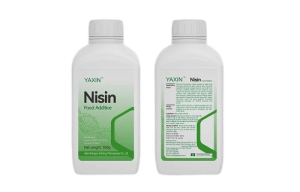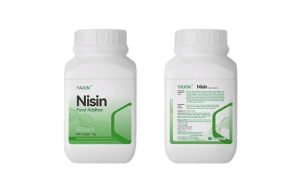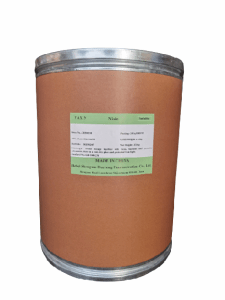
 CONTACT
CONTACT
- Linkman:Linda Yao
- Tel: +8618231198596
- Email:linda.yao@dcpharma.cn
- Linkman:CHARLES.WANG
- Department:Overseas
- Tel: 0086 0311-85537378 0086 0311-85539701
ε-Polylysine Hydrochloride Supplier,Preservative of Sanitary Products
TIME:2025-01-08ε-Polylysine hydrochloride has significant preservative effects in feminine hygiene products, primarily due to its unique physicochemical properties and broad antimicrobial spectrum. Below is a detailed explanation of its preservative effects in feminine hygiene products:
I. Basic Characteristics of ε-Polylysine Hydrochloride
·Source: ε-Polylysine hydrochloridee is a natural preservative extracted from Streptomyces albulus, a strain of white-chain bacteria, through controlled fermentation.
·Chemical Structure: It contains 25-35 L-lysine residues and is a homopolymer.
·Safety: Acute toxicity tests indicate that the LD50 of ε-polylysine hydrochloride is 5 g/kg, which is similar to the toxicity of common salt, indicating it has a high level of safety.
II. Preservative Mechanism of ε-Polylysine Hydrochloride
·Broad-Spectrum Antimicrobial Activity: ε-polylysine hydrochloride has significant inhibitory effects on both Gram-positive and Gram-negative bacteria, yeast, molds, and other microorganisms. This allows it to effectively prevent microbial contamination during the production and storage of feminine hygiene products.
·Heat Resistance: ε-Polylysine hydrochloride remains stable and does not decompose even in high-temperature environments (e.g., maintaining stability at 121°C for 30 minutes). This property makes it suitable for use in the heat sterilization process of feminine hygiene products, ensuring that its preservative effects remain intact after high-temperature disinfection.
·Water Solubility: ε-Polylysine hydrochloride is highly soluble in water, with a solubility of at least 500 g/L, enabling it to be evenly distributed throughout the material of feminine hygiene products, thereby enhancing its preservative effects.
III. Application of ε-Polylysine Hydrochloride in Feminine Hygiene Products
·Improving Product Safety: Adding ε-polylysine hydrochloridee as a preservative to feminine hygiene products significantly reduces the risk of microbial contamination, thereby enhancing the safety and hygienic quality of the products.
·Extending Shelf Life: Due to its significant antimicrobial effects, ε-polylysine hydrochloride effectively extends the shelf life of feminine hygiene products, reducing product degradation caused by microbial contamination.
·Enhancing Product Competitiveness: As consumers' attention to product safety and hygiene quality continues to increase, feminine hygiene products using ε-polylysine hydrochloride as a preservative will be more competitive in the market.
IV. Usage Precautions
Although ε-polylysine hydrochloride demonstrates significant preservative effects in feminine hygiene products, attention should be paid to the following points during use:
·Proper Usage: Overuse may affect other product properties, so it should be used strictly according to the product formulation and process requirements.
·Synergistic Effects with Other Ingredients: ε-Polylysine hydrochloride can work synergistically with other preservatives or additives to improve the overall preservative effect of the product. However, attention should be paid to the interactions and compatibility between ingredients during use.
·Storage Conditions: It is essential to ensure that feminine hygiene products are stored and transported in a dry, cool environment to prevent ε-polylysine hydrochloride from losing its effectiveness due to moisture or high temperatures.
ε-Polylysine hydrochloride has significant preservative effects in feminine hygiene products, greatly enhancing product safety and hygienic quality. During use, the amount should be carefully controlled, the interactions and compatibility of ingredients should be considered, and storage and transportation conditions should meet the required standards.
- Tel:+8618231198596
- Whatsapp:18231198596
- Chat With Skype







